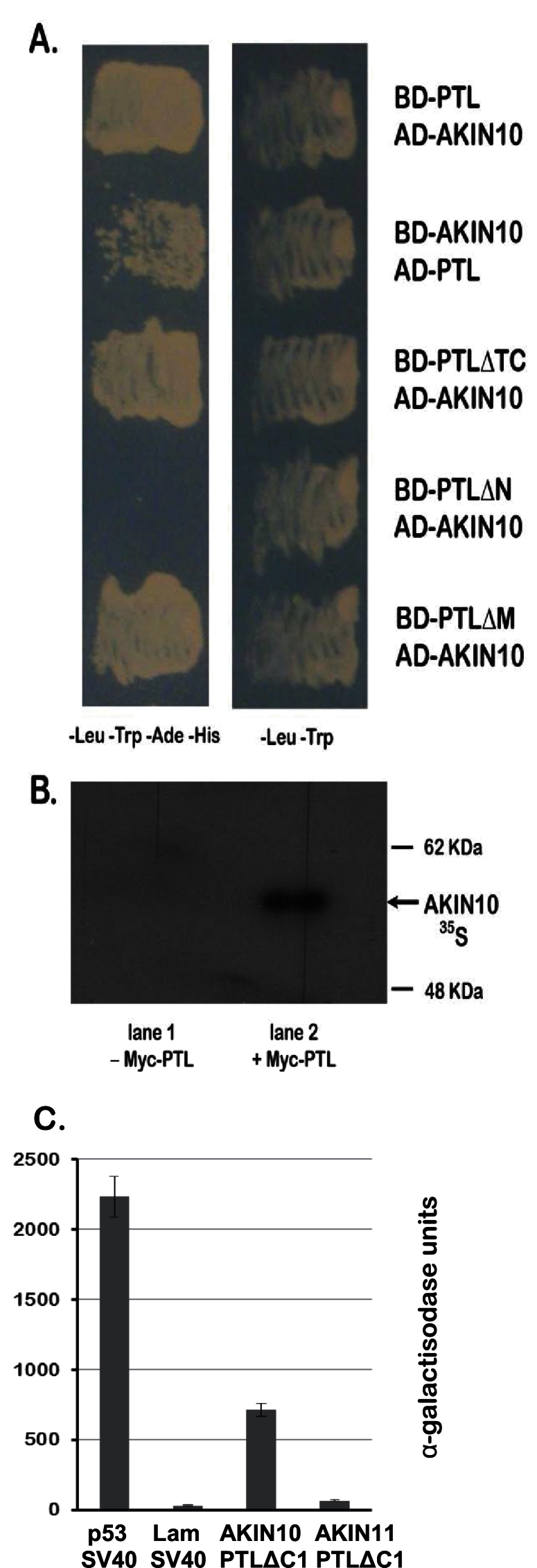Fig. 2.
PTL interacts with AKIN10 in yeast and in vitro. (A) Yeast two-hybrid interactions of full-length and deleted versions of PTL (see Fig. 1) with AKIN10, showing that interaction does not occur if the N terminal third of PTL is deleted. Medium contained 25mM 3-AT to require strong histidine prototrophy for growth, and to inhibit autoactivation conferred by the C-terminal region of PTL (for negative controls, see Kaplan-Levy et al., 2014). Left column: growth indicates interaction. Right column: control. (B) Autoradiograph showing co-immunoprecipitation of 35S-labelled AKIN10 with Myc-tagged PTL following treatment with anti-Myc antibody. The control (lane 1) lacks Myc–PTL. (C) Quantitative assay of yeast two-hybrid interaction between BD–PTLΔC1 and AD–AKIN11 showing a very weak interaction compared with AD–AKIN10. A positive control (p53 and T-antigen of simian virus 40) and a negative control (Lam and T-antigen) are also shown. Means of three assays±standard errors are plotted for each combination.

